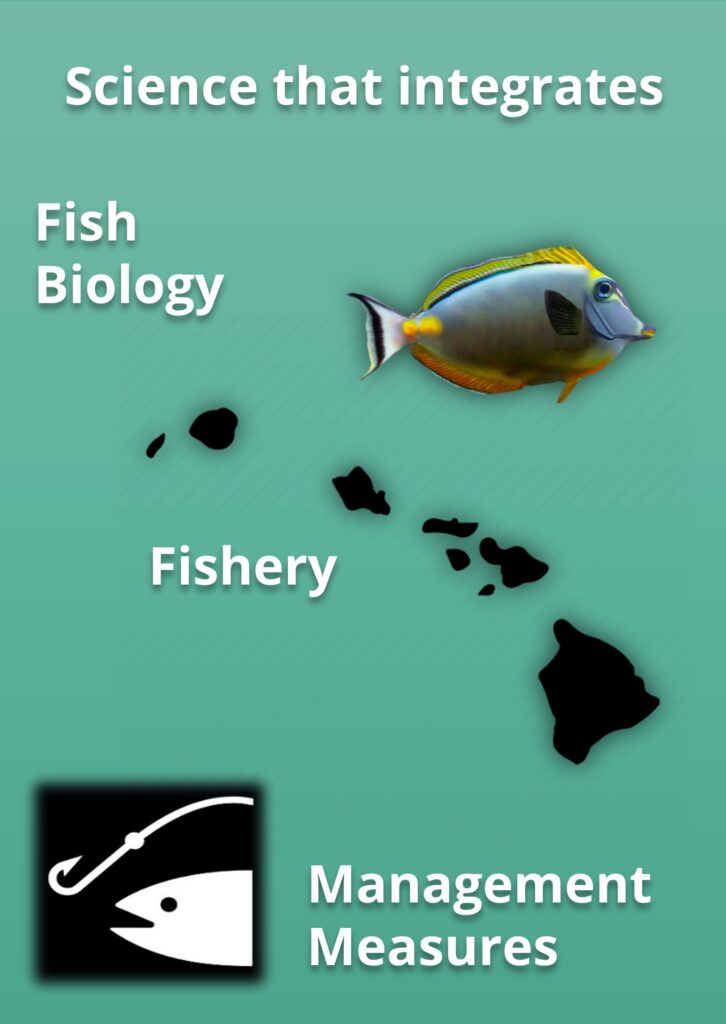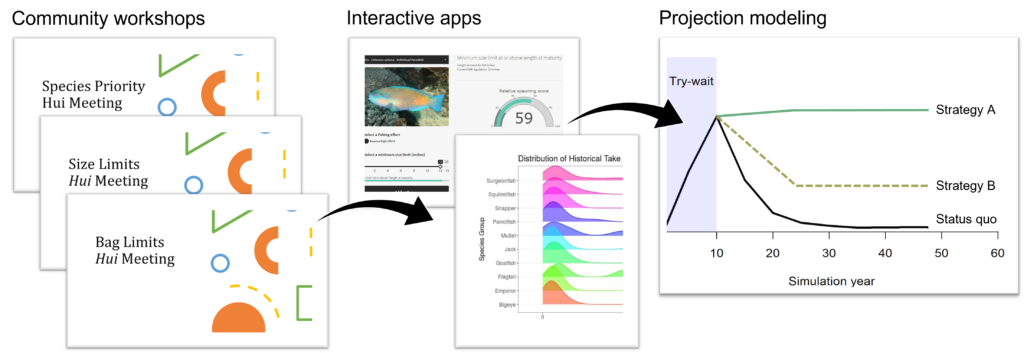Community level fishery management planning is a multi-faceted process that begins by engaging with stakeholders, decision-makers, and subject matter experts. The planning process must be built upon transparency of decision-making and transparency of supporting scientific analysis. At each step in the process, educational materials can help to enable full participation of stakeholders.
As an example of community-level management planning, we highlight our role in work conducted at Ka‘ūpūlehu Marine Reserve, Hawaii, where we contributed by:
- Developing interactive web applications to elicit preferences for fishery management measures.
- Evaluating management measures for more than a dozen priority reef fishes using population dynamics models.
- Presenting educational materials that enabled audience members to fully participate in fishery decision-making.
The Project
We worked with the Ka‘ūpūlehu Marine Life Advisory Committee (KMLAC) and The Nature Conservancy (TNC) to support development of a fishery management plan for Ka‘ūpūlehu Marine Reserve. Determined to restore fishery resources and ensure long-term sustainability, KMLAC engaged in a process of identifying suitable fishery management measures for their multi-species reef fishery.
Our Role
We served as fishery analysts and educators for this multi-faceted project. Our role was to provide analysis of the anticipated consequences of fishery management measures. Management measures included size limits, daily bag limits, no-take marine reserves, and seasonal closures.
Our team supported a community engagement process by doing the following:
- Contributing to the design of an engagement process using TNC’s FishPath process.
- Providing scientific communication materials for multiple community-led workshops.
- Conducting data analysis from start to finish, including tidying data sets, data summaries, and size limit and bag limit analyses.
- Creating interactive data applications to support community-led selection of management measures for more than a dozen priority reef species.
- Conducting multi-species management strategy evaluation (MSE) and projection modeling for priority species using population dynamics models.


Collaborators
PA Moore, E Ristig, WJ Harford
